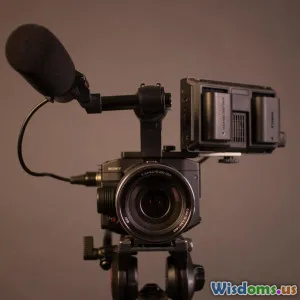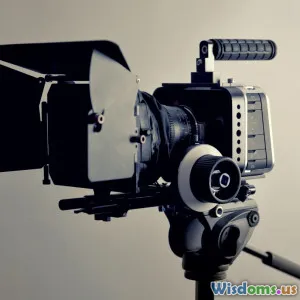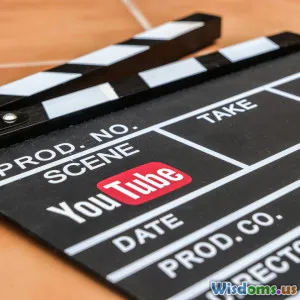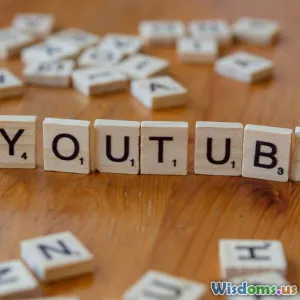
Explainer Videos or Animation Which Drives More Conversions
9 min read Explore how explainer videos and animations impact conversion rates and discover which format truly drives more engagement and sales. (0 Reviews)
Explainer Videos vs Animation: Which Drives More Conversions?
In today’s hyper-competitive digital landscape, capturing user attention is both an art and a science. Businesses continuously search for ways to engage prospective customers effectively — and one powerful tool in their arsenal is video content. Specifically, explainer videos and animations have emerged as two leading formats that promise to communicate complex messages succinctly and compellingly. But the key question remains: which format actually drives more conversions?
Convincing potential customers to take action — whether signing up for a service, making a purchase, or requesting a demo — hinges on clear messaging and emotional connection. Let’s dive deep into the nuances of explainer videos and animations, analyze their strengths, backed with real-world data, and uncover which format delivers a greater return on investment.
Understanding Explainer Videos and Animation: Definitions and Differences
What Exactly is an Explainer Video?
An explainer video is a concise, straightforward video designed to explain a product, service, or idea in an easy-to-understand way. Typically lasting between 60 to 120 seconds, these videos often combine live action or animated elements with a clear voiceover that guides the viewer. They aim to simplify complex concepts in under two minutes.
Examples include Dropbox’s iconic explainer video from 2009, which resulted in a 10% boost in conversions and helped the company skyrocket to mainstream success.
What Does Animation Encompass?
Animation refers to any visual content created frame-by-frame, either hand-drawn, computer-generated (2D/3D), or stop-motion. It is a broad term — explainer videos often use animation, but animation itself extends beyond just explanations. Consider Pixar’s storytelling or animated tutorials, commercial advertisements, and educational videos.
When discussing animation in this context, we primarily mean standalone animated videos not always structured as direct explanations but designed to capture attention aesthetically and emotionally.
Key Differences
|
| Explainer Videos | Animation |
|---|---|
| Usually 60-120 seconds | Can vary widely in length |
| Focus on clarity and simplicity | Focus on creativity and visual appeal |
| Aim to solve customer problems quickly | Tend to evoke emotion and brand personality |
| Commonly feature voiceovers | Often rely on music, sound effects, and visuals |
Metrics That Matter: Understanding Conversion Drivers
Conversions aren’t just clicks. They are intentional user actions that align with business goals. Measuring which video format drives higher conversions requires examining engagement metrics such as:
- Click-through rates (CTR)
- Average watch time
- User retention
- Action completion post-video (sign-ups, purchases, downloads)
Industry studies by Wyzowl and Vidyard have shed light on how video can boost conversion rates by up to 80%, but granular distinctions between video styles can offer deeper insights.
Explainer Videos: Clarity is King
Why Explainer Videos Boost Conversions
Clarity of message directly correlates with conversions. When viewers understand how a product solves their problem quickly, they’re more likely to act. Explainer videos excel here by boiling down complex features into digestible chunks.
According to a 2022 HubSpot survey, 81% of marketers reported that videos helped increase sales, with explainer content cited as the top performing type.
Case Study: Slack’s Explainer Video
Slack’s simple animation-style explainer video reportedly increased their signup conversion rate by 22%. The video showcased use cases elegantly and established immediate value proposition without overwhelming the viewer.
What Makes Them Effective?
- Tight scripting geared towards pain points
- Clear call-to-action (CTA) at the end
- Integration with landing pages
Explainer videos foster trust by reducing friction in buyer’s journeys.
Animation: The Creativity and Emotional Connection Powerhouse
Emotional Resonance and Brand Recall
Animations appeal to emotions through imaginative storytelling and stylized visuals, fostering brand affinity. In 2020, a survey by Animoto found that 92% of consumers used video to make purchase decisions—animated videos were considered more memorable by 70% of respondents.
Example: Dollar Shave Club’s Viral Animation
Their humorous, edgy animated videos fueled explosive viral growth, with a reported 12,000 new orders in the first two days after launch.
Strengths of Animation
- Versatility in style and tone
- Ability to transform abstract concepts into engaging stories
- Greater room for brand personality and humor
Caveat
Animated videos’ effectiveness requires high-quality production and alignment with target audience preferences. Poorly executed animation can detract from credibility.
Head-to-Head: Which Drives More Conversions?
Research Comparisons
A 2023 Wyzowl report analyzing 1000 marketing campaigns revealed:
- Explainer videos yielded an average conversion uplift of 15-20%.
- Standalone animated videos boosted conversions by 10-12%, especially effective in awareness stages.
This suggests that explainer videos might be more efficient for direct conversion campaigns, while animation excels at brand building and top-funnel engagement.
Audience and Context Matter
For SaaS or B2B tech: Explainer videos are favored because clarity and speed to value are prioritized.
For lifestyle, entertainment, or consumer brands: Animation’s storytelling can forge stronger emotional ties, translating eventually to conversions.
Combining Both for Maximum Impact
The most successful brands integrate both formats in their marketing funnel:
- Use animation for awareness videos on social media to capture interest
- Deploy concise explainer videos on product pages and emails to push conversion
HubSpot recommends this holistic strategy to address different buyer stages.
Best Practices to Maximize Video Conversions
1. Focus on the Viewer’s Problem
Every video must center on how your product/service solves a real issue.
2. Clear and Compelling CTA
Explicit invitations such as “Get Started Today” or “Request a Demo” increase action.
3. Optimize for Mobile
Data shows 70% of video views happen on mobile — ensure your video is mobile-friendly.
4. Continuous Testing
A/B test different video types and placements to find your sweet spot.
5. Keep It Short and Sweet
Attention spans are short — ideal explainer or animated videos remain under 2 minutes.
Conclusion: No One-Size-Fits-All Answer
Choosing between explainer videos and animation to drive conversions depends largely on your product, audience, and campaign objectives.
Explainer videos win on delivering clarity and speeding up decisions — indispensable for technical or SaaS offerings. On the other hand, animation shines in weaving narrative, emotion, and brand identity in memorable ways — key in B2C markets.
By understanding these nuances and leveraging data-backed insights, marketers can craft video strategies that not only attract but convert. The best results often come from thoughtfully integrating both into your buyer’s journey, matching format with context.
Takeaway: Don’t just ask “which drives more conversions?” but rather “how can I intelligently use both to guide customers from interest to action?” The digital audience is diverse, and nuanced video storytelling can be your strongest conversion catalyst.
References & Further Reading
- Wyzowl Video Marketing Statistics 2023
- HubSpot Marketing Data 2022
- Animoto Consumer Video Trends 2020
- Case studies from Dropbox, Slack, Dollar Shave Club
Harness the power of video storytelling by balancing clarity and creativity — and watch your conversions soar.
Rate the Post
User Reviews
Popular Posts




















